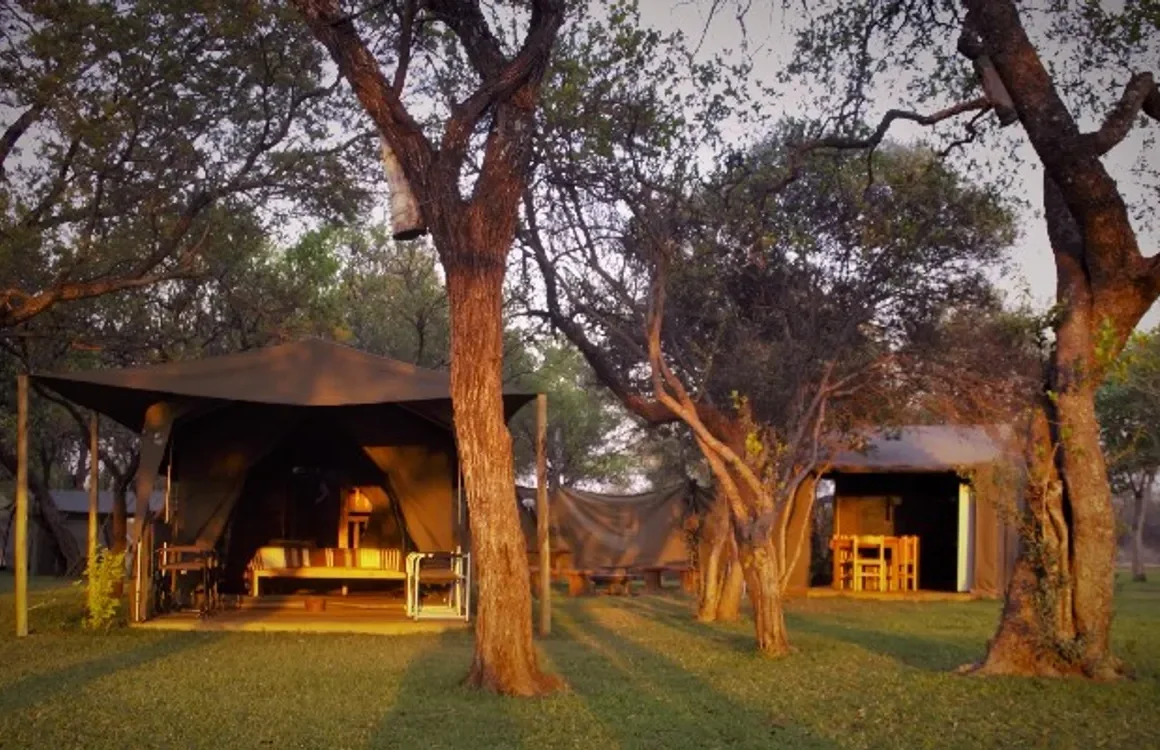
Which bird species do you think is the biggest attraction to visitors of your lodge (please only name one species)?
Secretary bird (Sagittarius serpentarius)
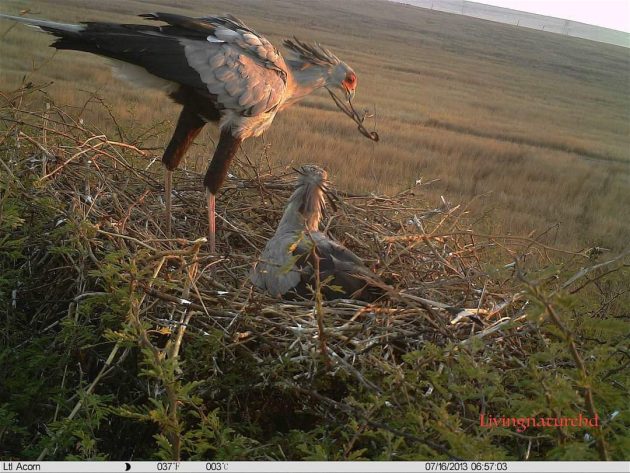
What is the name of your lodge, and since when has your lodge been operating?
Thorn Tree Bush Camp has been operating since 2016
Goliath Heron
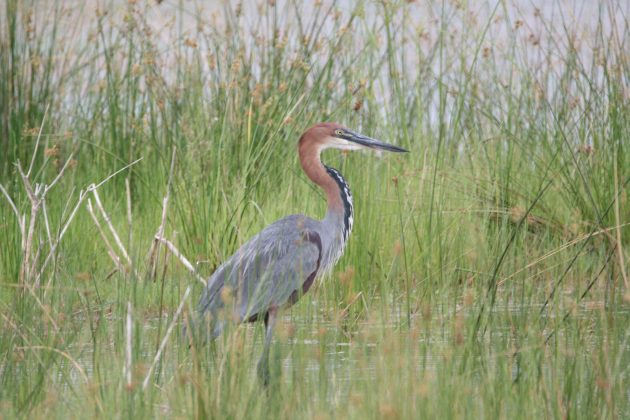
How best to travel to your lodge?
From Pretoria (Twane), drive North on the N1, take the Hammanskraal turnoff, enter Dinokeng Game Reserve through Tau gate, turn right on De Waginsdrift road enter at Laksman Road
Ostrich
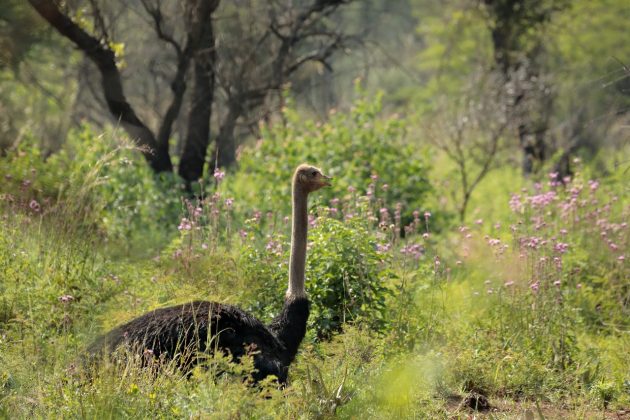
What kind of services – except for accommodation and food – does your lodge offer to visiting birders?
We offer bush walks and game drives,and we have some bird feeders at some of the units
Red-billed Oxpecker
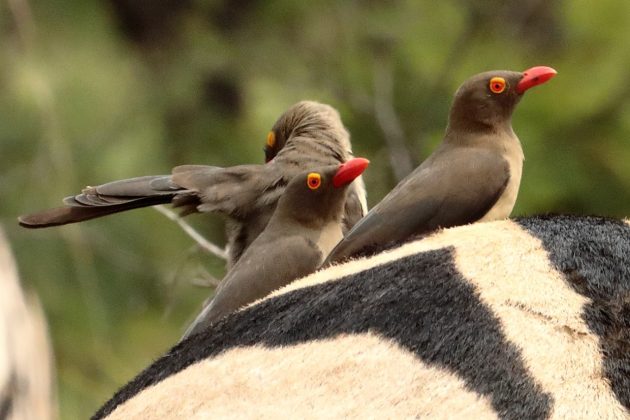
What makes your lodge special?
- Thorn Tree Bush Camp is a uniquely immersive wilderness retreat nestled in Dinokeng Game Reserve, the only Big Five reserve with free-roaming wildlife in Gauteng. Guests rave about its peaceful, authentic bushveld atmosphere— falling asleep to lion roars, jackal barks, and bush-baby calls while gathering around a private fire pit under a starlit sky
- The diverse accommodation—from luxury en-suite tents and tree-top suites to self-catering campsites—caters to couples, families, and groups seeking both comfort and adventure
- With excellent amenities including kitchenettes, a sparkling swimming pool, communal boma, braai facilities, and secure parking, it strikes the ideal balance between rustic and convenient. Visitors consistently praise the warm, attentive staff and value-for-money experience:
- “Beautiful location… sitting by your private tent with a fire listening to the wildlife around you is amazing.”
- “Tranquility and quietness. Animals close to the fence. Our hosts were excellent and caring.”
- All in all, Thorn Tree Bush Camp offers a memorable escape from city life—a place to reconnect with nature, enjoy sunset braais, guided game drives, and authentic safari moments just 60 km from Pretoria.
Black-chested Snake-eagle
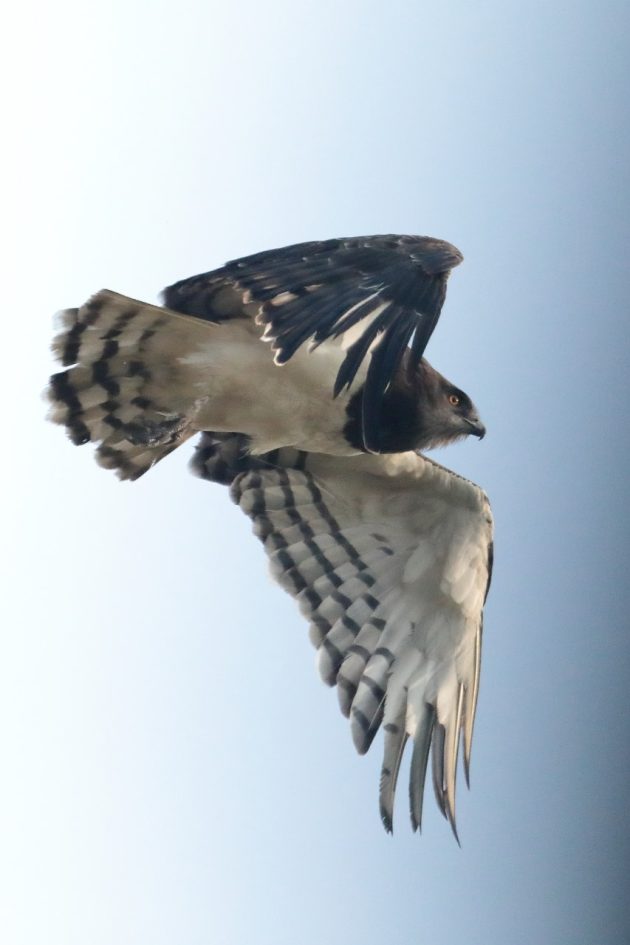
What are the 10 – 20 most interesting birds that your lodge offers good chances to see?
Birding Specials of Dinokeng Game Reserve:
- Ostrich (Struthio camelus): The world’s largest bird — flightless, but lightning-fast on land. Often seen striding confidently through the grasslands.
- African Finfoot (Podica senegalensis): A shy, secretive bird often found along rivers and dams — a real treat for birders!
- Goliath Heron (Ardea goliath): The world’s largest heron, typically seen around large water bodies.
- Kori Bustard (Ardeotis kori): Africa’s heaviest flying bird, commonly spotted walking the open plains.
- Martial Eagle (Polemaetus bellicosus): The largest eagle in Africa — a powerful hunter with piercing eyesight.
- Secretarybird (Sagittarius serpentarius): Easily recognized by its long legs and dramatic hunting style, famously stomping snakes and small prey.
- Pearl-spotted Owlet (Glaucidium perlatum): A tiny but fierce owl often heard calling during the day, famous for the “false eyes” on the back of its head.
- Black-chested Snake Eagle (Circaetus pectoralis): A specialist in hunting snakes and reptiles, often seen soaring effortlessly overhead, scanning the ground.
- African Pygmy Kingfisher (Ispidina picta): A jewel-toned summer visitor, often glimpsed darting through riverine vegetation.
- Woodland Kingfisher (Halcyon senegalensis): Its electrifying call is a signature sound of summer in the bushveld.
- European Bee-eater (Merops apiaster): A colorful migrant often seen in groups near termite mounds or open areas.
- Black-crowned Tchagra (Tchagra senegalus): A skulking bushveld bird with a haunting, whistled call — hard to spot but rewarding.
- African Harrier-Hawk (Polyboroides typus): Also known as the Gymnogene, this agile raptor is known for raiding nests and probing cavities with its uniquely flexible joints.
Pearl-spotted Owlet
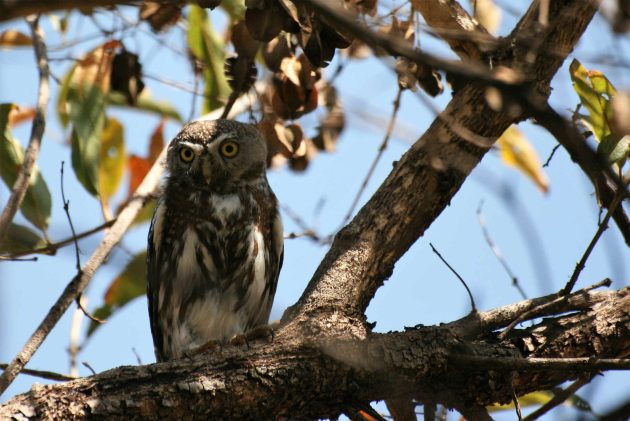
What is the best time to visit your lodge, and why?
The best time to visit Thorn Tree Bush Camp for birding is during the summer months, from November to March, which coincides with the rainy season in the Dinokeng Game Reserve.
Why Summer is Ideal for Birding:
- Migratory Birds Arrive: This is when the region welcomes a wide variety of migratory species from Europe, Asia, and elsewhere in Africa.
- Bird Activity Peaks: The bush comes alive with breeding activity, colourful plumage displays, and distinctive bird calls.
- Water Sources Attract Birds: Seasonal pans and waterholes fill up, attracting birds in large numbers.
- Diverse Habitats: Dinokeng’s mix of savanna, woodland, and wetland areas provides ideal conditions for spotting a broad range of species.
Lesser Striped Swallow

What You Can Expect:
- Summer visitors like Woodland Kingfishers, European Bee-eaters, and Cuckoos.
- Resident favourites such as Hornbills, Pearl-Spotted Owlets, Rollers, and raptors like Martial Eagles and Bateleurs.
- Around 300 bird species have been recorded within Dinokeng, making it a top Gauteng birding destination.
Note: Summer is also the warmest and wettest time of year, so pack light clothing, sunscreen, and insect repellent — but the birdlife more than makes up for the occasional afternoon thunderstorm. If you’re looking for a quieter bush experience with good birding, late August to October is also excellent, especially for raptors and waterbirds as the bush starts waking up after winter.
Woodland Kingfisher

Is your lodge involved in conservation efforts? If yes, please describe them.
We are situated in Dinokeng Game Reserve, a big 5 reserve. There are special projects related to the rhino and cheetah.
Crested Barbet
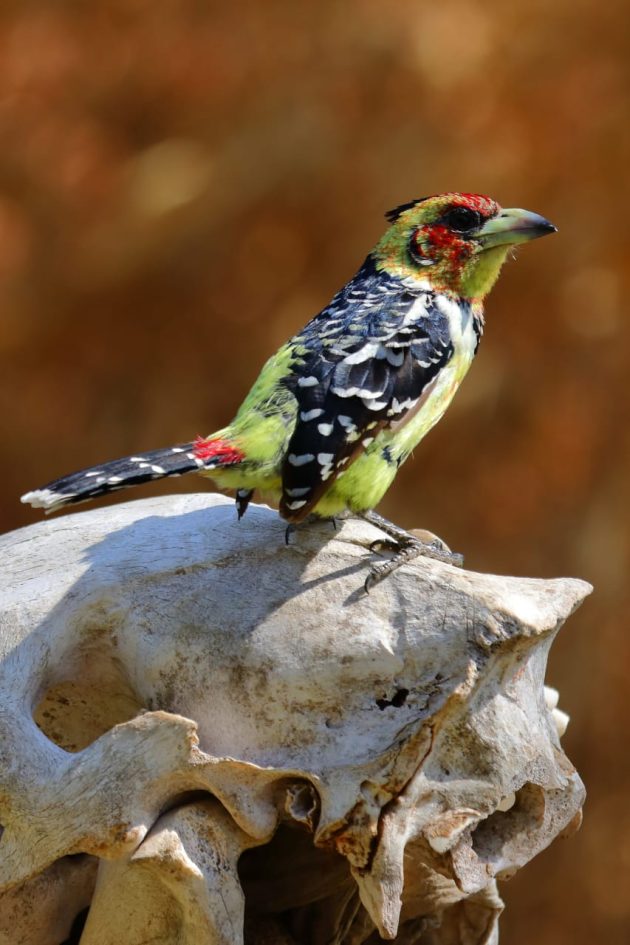
What other suggestions can you give to birders interested in visiting your lodge?
Bring
- Clothing that can layer with a minimum of bright, light, or white-colored clothing
- Hat
- Sunglasses
- Binoculars
- Camera
- Sunscreen.
Verreaux’s Eagle-owl
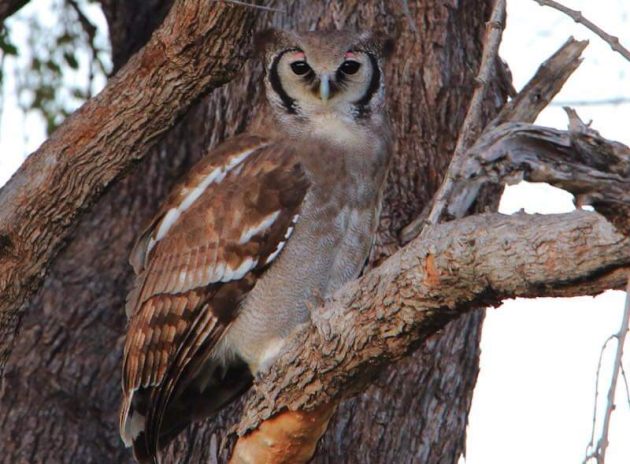
Do you have activities for non-birders? If so, please describe.
Enjoy game viewing in an open Safari vehicle or on foot under the expert guidance of a qualified, experienced field guide. Guides are passionate and keen to share their knowledge and experiences of the African bush and its wildlife.
Guided game drive duration: 2.5 to 3 hours. Guided Bush walk duration: 2.5 to 3 hours.
Southern Yellow-billed Hornbill
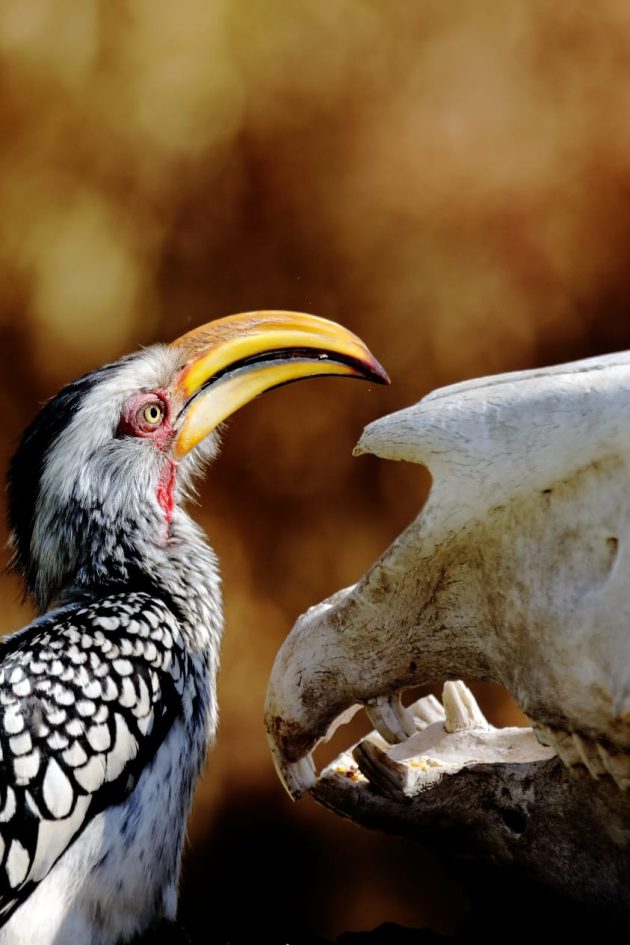
If any reader of 10,000 Birds is interested in staying at your lodge, how can they best contact you?
Via e-mail: info@thorntreebushcamp.co.za
Bearded Woodpecker
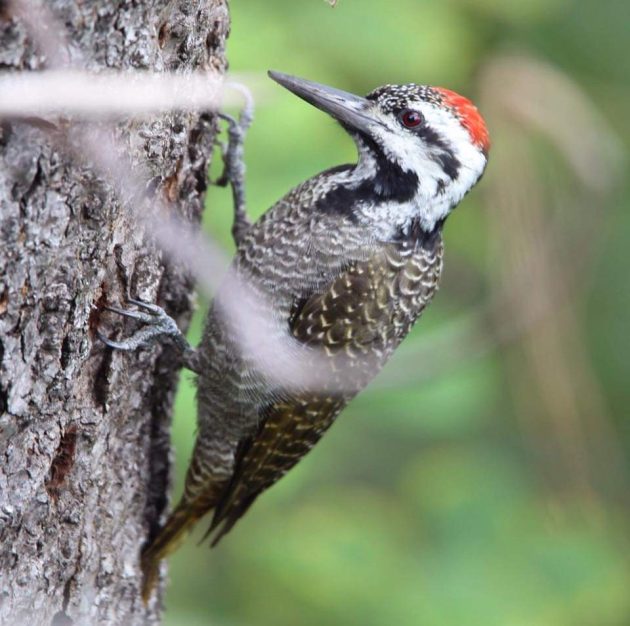






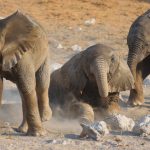
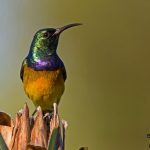


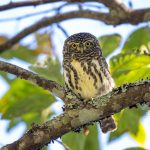
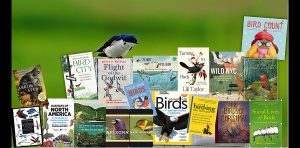

I can strongly recommend Dinokeng Game Reserve, especially for first time birders in SA. Some good roadside birding on the way north from Jo’burg too.